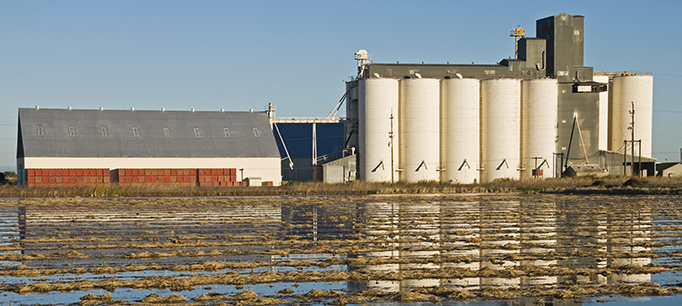A new initiative launched by President Obama in March seeks to better coordinate federal drought-management efforts at the basin scale, and ensure that key federal farm programs are in alignment with watershed conservation objectives developed by state and local partners. Making federal farm-program dollars work better and go farther will be key to this effort’s success.
 The critical role of US Department of Agriculture (USDA) programs in managing water scarcity is often overlooked. But as we document in our recent report on the federal role in western water, USDA’s programs represent the lion’s share of federal water- and drought-related funding in the region. Given farming’s large water footprint in the West, even small changes in farm practices can have broad effects on water supplies and ecosystem health.
The critical role of US Department of Agriculture (USDA) programs in managing water scarcity is often overlooked. But as we document in our recent report on the federal role in western water, USDA’s programs represent the lion’s share of federal water- and drought-related funding in the region. Given farming’s large water footprint in the West, even small changes in farm practices can have broad effects on water supplies and ecosystem health.
The agricultural water and land stewardship programs run by the Natural Resources Conservation Service (NRCS) and the Farm Service Agency are singularly important, due to their size and reach. These programs provide farmers with technical and financial support to improve water use efficiency and conserve soils, water, and wildlife habitat through on-farm investments. In addition, easement programs pay farmers to convert environmentally sensitive lands to wetland or cover crops—or to keep their lands in production rather than allow it to be developed.
Practical reforms in easement programs could yield drought-management results. The wetland recovery program pays farmers to permanently restore fields to wetlands, and the conservation reserve program pays them to convert fields to cover crops for 10–15 years. But such long-term commitments to fallow lands are unappealing to many farmers.
These programs could be more effective by allowing shorter easements and working with groups of farmers rather than individuals. For instance, paying farmers to create temporary wetlands during droughts can stretch scarce water and dollars while supporting waterbirds. Similarly, paying a group of farmers to do rotational fallowing—which means they take turns temporarily fallowing fields—can reduce overall water use while keeping farms in production. Meanwhile, other incentives could focus on farmers who commit to maintaining land in field crops rather than permanent crops—a change that could boost drought resilience in places like California, which has seen a big expansion of tree crops that are harder to fallow.
USDA programs represent the lion’s share of federal water- and drought-related funding in the West.
Another important change involves the popular NRCS subsidies to support efficiency investments on farms. The problem is that reducing the amount of water needed to grow specific crops does not usually translate into more water in the system, since newly available water is often used to increase production. And this water can be vital to downstream users and the recharge of groundwater.
To make sure these subsidies don’t conflict with basin management goals, USDA efficiency programs should seek to maintain or enhance water to meet environmental needs, and prevent harm to groundwater basins. Solutions could include expanding and improving temporary, strategic flows to meet habitat needs, and dedicating water created through efficiency programs to environmental uses or groundwater recharge.
Many of these changes could occur under existing statutory authority, and some program updates could be included in the 2019 Farm Bill. To be more effective in managing western drought, future farm bills should also put relatively more emphasis on easements and less on efficiency-oriented subsidies.
These changes would make federal support programs a better fit for many farmers, while supporting basin-level drought management goals of improving conditions for fish and wildlife, recharging groundwater, and reducing overall water use in areas grappling with water scarcity.
Read a summary of policy recommendations from Improving the Federal Response to Western Drought (February 2016)
Read the federal action plan on improving long-term drought resilience
Watch a video on “Reforming Federal Drought Management”
Visit the PPIC Water Policy Center


